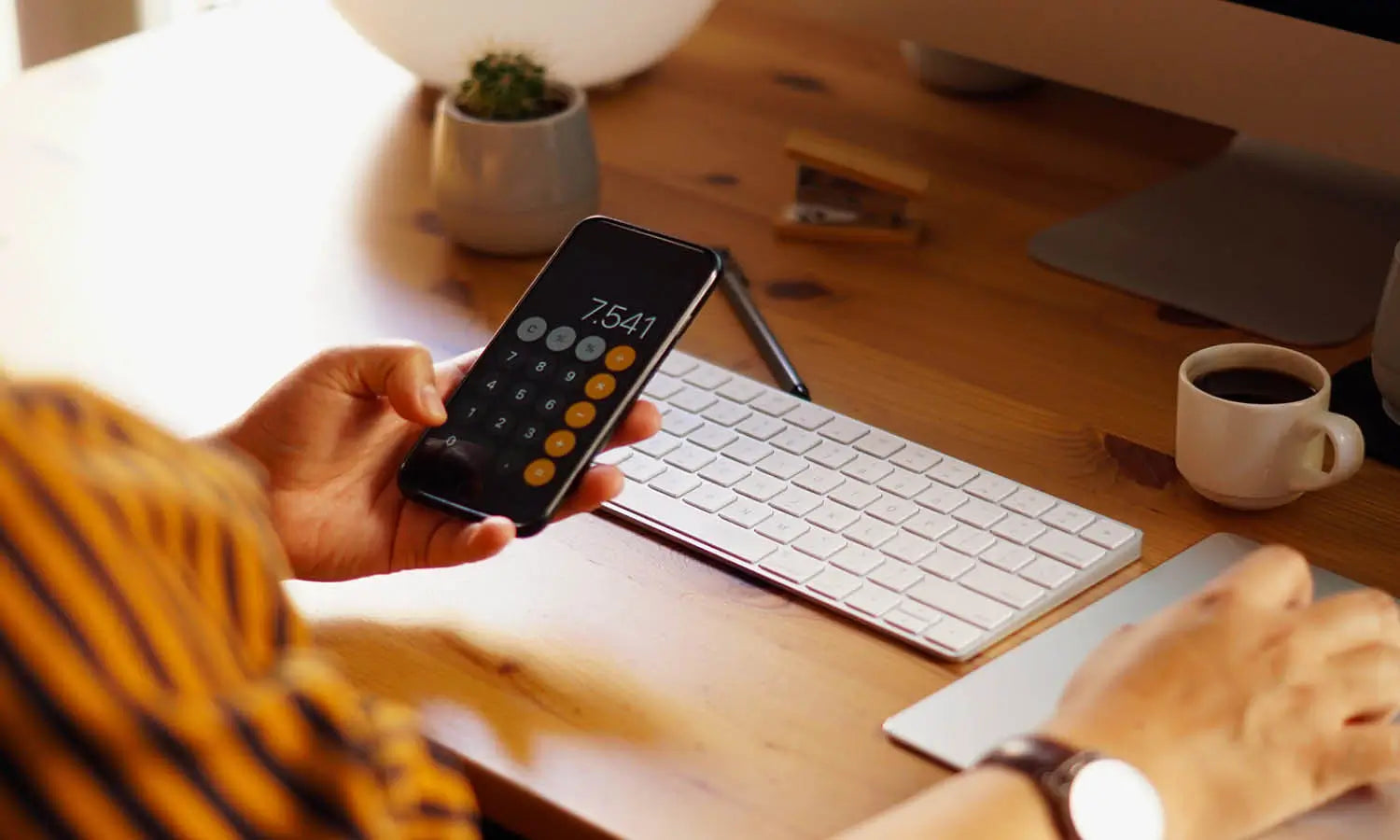How Much Should A Professional Logo Designer Charge?

In the bustling realm of business, the visual identity a company projects can make or break its connection with customers. At the forefront of this identity is the logo—a symbol capturing the essence of a brand. The expertise of a professional logo designer plays a pivotal role in crafting this crucial element. A well-designed logo can foster trust, recognition, and establish a firm's position in the market. Given its significance, many businesses find themselves confronted with a pressing question:
How much should they charge for this emblematic representation? Delving into the nuances of the costs associated with logo design, it's essential to discern the value brought by a seasoned professional in this space. As we navigate the intricacies of the logo design industry, understanding the correlation between the designer's expertise and the associated charges becomes paramount. Through this article, we aim to shed light on the dynamics of pricing, helping businesses make informed decisions when investing in their brand's visual ambassador.
What Makes Someone a Professional Logo Designer?
In today's digital age, the term "logo designer" is often thrown around loosely, with many individuals claiming expertise after creating just a handful of logos. However, becoming a professional logo designer entails far more than just familiarity with graphic software. It's a confluence of formal education, real-world experience, and a deep understanding of branding.
Education and Credentials
A true professional usually has a foundational education in design. This doesn't necessarily mean a degree, but formal training provides a solid base on principles like typography, color theory, and visual hierarchy. Many professional designers also hold certifications from recognized design institutions, affirming their expertise and dedication to the craft.
Portfolio and Experience
The adage, "The proof is in the pudding," holds. A professional logo designer often has a robust portfolio showcasing a range of projects. This portfolio is not just a testament to their design skills but also a reflection of their adaptability across industries and styles. Experience also brings with it the ability to manage client expectations, understand business goals, and translate them into visual identities. They don't just charge for a design; they charge for the accumulated wisdom of years.
Specialization in Branding and Identity
Logo design isn't just about creating a visually pleasing emblem. It's about encapsulating a company's ethos, values, and mission into a singular visual element. Professionals have a knack for diving deep into a company's identity, understanding its audience, and crafting logos that resonate. Their training often encompasses branding as a larger discipline, ensuring the logos they create are not just beautiful, but also functional and strategic.
Tools and Techniques
While tools don't make the designer, professionals invest in the best resources available. They are well-versed in industry-standard software, stay updated with the latest design trends, and often undergo continuous learning to refine their skills. This knowledge ensures the logos they design are not only contemporary but also versatile across various mediums.
Ethical Standards
A mark of a true professional is adherence to ethical standards. They avoid plagiarism, respect copyrights, and operate with transparency. When you're paying a premium charge for a logo, a professional ensures that the design is original and uniquely tailored to your brand.
While many can claim the title of a "logo designer", it's the combination of education, experience, specialization, and ethics that elevates someone to the status of a professional logo designer. When considering the charges associated with hiring such an expert, businesses must understand the multifaceted expertise they're investing in, ensuring their brand's visual identity is in adept hands.

Factors Influencing the Charge of a Professional Logo Designer
When engaging with a professional logo designer, businesses often wonder about the rationale behind their charges. Given the pivotal role of a logo in shaping a brand's identity, understanding the nuances of these charges is essential. Various factors come into play, each contributing to the overall cost. Let's delve into some of these influential factors.
Complexity and Intricacy of the Design
A simple, minimalistic logo might not command the same price as a more intricate and detailed design. The complexity determines the time and effort required, with more detailed logos often demanding deeper research, more sketches, and longer design iterations.
Time Required for Research and Conceptualization
A logo isn't merely a piece of art; it's a representation of a brand's ethos. Professional logo designers invest significant time in understanding a business's values, target audience, and market position. This research phase, which ensures the logo's relevance and resonance, can be time-consuming, influencing the final charge.
Revisions and Additional Services
Designing a logo is often an iterative process. The number of revisions included in the package, as well as any additional services such as creating branding guidelines or providing multiple logo variations, can impact the cost. Professionals often charge more for extensive revisions, as they involve additional time and effort.
Market Demand and Geographical Location
A designer's demand in the market, bolstered by their reputation and portfolio, can be a significant factor in their pricing. Moreover, a designer based in a metropolitan city with a higher cost of living might have different charges compared to one in a smaller town, even if their skill levels are comparable.
Customization vs. Template
Some designers offer template-based logos, which can be quicker and more affordable. In contrast, custom logos, tailored specifically for a business, demand a higher charge due to their uniqueness and the effort involved in crafting them from scratch.
Urgency and Turnaround Time
If a business requires a logo on an expedited schedule, a rush fee might apply. Faster turnarounds leave less room for extensive research and iteration, but they demand more immediate focus from the designer.
Tools and Software Used
Professional software licenses, updated hardware, and other specialized tools come at a cost. Designers who invest in top-tier tools often produce better quality work and might factor these operational costs into their charges.
The charge of a professional logo designer isn't arbitrary. It's a reflection of their expertise, effort, tools, and the various nuances involved in the design process. By understanding these factors, businesses can make more informed decisions, ensuring they receive value commensurate with their investment.

Pricing Structures: How Designers Charge
Engaging a professional logo designer is a strategic investment, but understanding their pricing model can sometimes seem like deciphering a puzzle. Given the varied structures that designers use to determine their charge, gaining clarity is essential for businesses aiming to budget effectively. Here's a breakdown of the common pricing structures adopted by logo designers:
Hourly Rate
Many designers prefer charging by the hour, as it fairly compensates for the time they invest in a project. This model is transparent and allows clients to have a direct correlation between effort and cost. However, the downside is the unpredictability for clients, as the final charge can vary based on the number of hours logged.
Fixed Rate
Under this model, a professional logo designer offers a set price for a logo design, regardless of the time spent. This gives businesses a clear upfront cost, making budgeting simpler. Typically, a fixed rate will include a defined scope of work, like a set number of revisions or specific deliverables. It's essential to understand this scope to avoid hidden costs or future misunderstandings.
Package Deals
To cater to diverse business needs, many designers offer tiered packages. For instance, a basic package might include just the logo design, while a premium package could encompass branding guidelines, business card designs, and multiple logo variations. These bundles provide value for money and allow businesses to select a package aligning with their requirements and budget.
Royalty-based or Equity Compensation
While less common, some designers might agree to a royalty-based compensation, especially for startups or products with high market potential. In this structure, instead of an upfront charge, the designer receives a percentage of sales or profits. Alternatively, equity compensation offers the designer shares in the business. While this can reduce initial costs, businesses should consider the long-term implications of such agreements.
Retainers
Established businesses or those in need of consistent design work might hire a professional logo designer on a retainer basis. This ensures the designer's availability over a period, offering services like regular updates, branding consistency checks, or design consultations for a set monthly or yearly fee.
The charge structure of a professional logo designer isn't one-size-fits-all. Each model has its pros and cons, tailored to accommodate different project scopes and client needs. By understanding these structures, businesses can navigate the design journey with clarity, ensuring they strike a balance between cost and value, and forge beneficial collaborations with designers.

The Difference Between Cheap and Expensive Logo Design
In a world driven by visuals, logos serve as silent ambassadors for brands. As businesses seek out design services, they often grapple with a spectrum of pricing. Understanding the disparity between cheap and expensive logo designs, and what one gets for the charge, is critical. After all, as the old saying goes, "You get what you pay for."
Depth of Research and Customization
When you engage a professional logo designer who charges a premium, a significant part of that cost goes into in-depth research. Such designers study your industry, target audience, company values, and competitors. This ensures that the logo not only looks good but also aligns with your brand's ethos and stands out in the market. On the other hand, cheaper options might offer generic, template-based designs that lack originality.
Quality of Craftsmanship
Higher-end designs often involve skilled craftsmanship. Every curve, color choice, and typography is meticulously chosen, ensuring adaptability across various platforms, from digital spaces to print. Cheaper logos might not consider these nuances, leading to potential issues in scalability or readability in diverse contexts.
Revisions and Iterations
A more substantial charge by a professional logo designer often includes multiple rounds of revisions. They understand the iterative nature of design and are open to feedback, refining the logo until it meets your vision. In contrast, cheaper services might limit the number of revisions or charge extra for each alteration, potentially escalating costs in the long run.
Longevity and Timelessness
Investing in a premium logo design often means receiving a timeless piece that remains relevant for years, if not decades. These logos tend to avoid fleeting design trends, ensuring they don't appear dated quickly. Cheaper designs might lean heavily on current trends, leading to a need for redesigns sooner than expected.
Additional Deliverables
Higher-end design services frequently offer comprehensive branding packages. Beyond the logo, they might provide branding guidelines, variations of the logo for different backgrounds, or even stationery designs. Cheaper services might offer only a singular design, with additional requests incurring added charges.
Post-Design Support
Premium services often extend support even after the design is delivered. Be it minor tweaks, color variations, or format changes; a professional logo designer stands by their work. Cheaper alternatives might not offer such post-design assistance, leaving businesses to fend for themselves for any subsequent needs.
While initial costs can sway businesses towards cheaper alternatives, understanding the depth, quality, and support that come with higher charges is paramount. An investment in a well-crafted logo by a seasoned professional can yield dividends in brand recognition and trust for years to come.

How to Determine Your Budget for a Professional Logo Designer
Every business, whether a fledgling startup or an established entity, understands the paramount importance of a logo. It's the visual cornerstone of your brand, often making the first impression on potential customers. But how does one decide on the right budget allocation for a logo? With diverse charges by professional logo designers, setting a budget can seem daunting. Here's a guide to help you navigate this crucial decision:
Understand Your Business Needs
Start by evaluating the role of your logo. Is it for a short-term campaign, or is it the central visual for your long-term brand identity? A logo for a flagship product or service might warrant a heftier investment compared to a one-off event or campaign.
Scope of Work
Clarify the deliverables you expect. Do you only need a primary logo, or are you looking for an entire branding package, including stationery, business cards, and branding guidelines? The broader the scope, the higher the potential charge.
Research the Market Rates
To avoid overpaying or underselling yourself, spend time researching what professional logo designers in your region or industry typically charge. Remember, prices can vary based on geographical location, expertise, and demand.
Prioritize Quality Over Cost
While it's tempting to opt for cheaper alternatives, especially for startups with tight budgets, remember that a logo is a long-term investment. A well-designed logo can enhance brand recognition and trust, potentially offering higher returns in the long run.
Allocate a Range, Not a Fixed Amount
Instead of zeroing in on a single figure, determine a budget range. This gives you flexibility during negotiations and allows you to adjust based on the designer's offerings. For instance, if a professional logo designer whose work you admire is slightly above your set budget, you might still be able to engage with them without overstretching your finances.
Factor in Future Needs
Consider the longevity of your collaboration with the designer. If you anticipate regular updates or foresee a long-term partnership, it might be cost-effective to invest in a designer who offers retainer packages or post-design support, even if their initial charge is higher.
Evaluate ROI
While difficult to quantify, ponder the potential return on investment. A unique, memorable logo can bolster brand recall and customer loyalty, translating into increased business value.
Consult with Design Professionals
If you're uncertain, seeking advice from industry professionals or hiring a branding consultant can provide clarity. They can offer insights into market rates, potential designers, and the value a strong logo can bring to your business.
Determining a budget for a professional logo designer is a nuanced process, blending business objectives, market research, and future goals. By being informed and strategic, businesses can ensure they allocate a budget that brings their vision to life without compromising on quality or financial sustainability.

Tips for Negotiating with a Professional Logo Designer
Engaging with a professional logo designer can be one of the most pivotal steps for a brand's visual identity. But just as essential is ensuring that you're getting value for your investment. Knowing how to negotiate without compromising the quality of the outcome is crucial. Here are some insightful tips to ensure a win-win negotiation regarding the charge and deliverables:
Do Your Homework
Before approaching a designer, research prevailing market rates for logo design in your industry or region. Armed with this knowledge, you'll be in a better position to discuss the charge and understand the designer's pricing rationale.
Understand Their Value Proposition
Instead of merely focusing on the bottom line, delve into what the designer offers. Are they providing additional services like branding guidelines, multiple revisions, or post-design support? Recognizing their complete package can make the charge seem more reasonable.
Be Transparent About Your Budget
Honesty can go a long way. If a professional logo designer is out of your budget, communicate your constraints. They might offer a tailored package that aligns with your financial capacity while still delivering value.
Discuss Payment Terms
Sometimes, it's not just about the amount but how it's paid. Consider discussing staggered payments, half upfront and half upon delivery, or even a retainer model if you foresee long-term collaboration. Flexible payment terms can ease financial strain and make a higher charge more manageable.
Respect Their Expertise
Negotiation is a two-way street. While it's natural to seek value for money, it's essential to respect the expertise and experience of the professional logo designer. Building mutual respect can lead to more amicable negotiation outcomes.
Explore Package Deals
If you require more than just a logo, inquire about bundled packages. Combining services, like logo design, business card design, and branding guidelines, can sometimes be more cost-effective than commissioning them separately.
Be Open to Compromise
While you have a vision and budget in mind, be open to feedback. A professional logo designer might offer insights or alternatives that you hadn't considered, which could influence the project's scope and cost.
Get Everything in Writing
Once you've negotiated terms, ensure everything is documented in a contract or agreement. This not only clarifies deliverables, timelines, and charges but also safeguards both parties in case of any future discrepancies.
Maintain a Long-Term Perspective
While negotiations can be focused on immediate costs, consider the long-term benefits of establishing a fruitful relationship with a designer. Investing in quality now can lead to better brand recognition and loyalty down the road.
Negotiation is an art that balances cost, value, and mutual respect. By being informed, transparent, and open-minded, you can navigate discussions with a professional logo designer effectively, ensuring a collaboration that benefits both parties.
Conclusion
Navigating the world of logo design can be intricate. Recognizing the value of a professional logo designer and understanding the factors that influence their charge is pivotal for businesses aiming for a robust brand identity. The investment in a well-crafted logo transcends its immediate cost, often serving as a cornerstone for brand recognition and trust. By being informed, setting a realistic budget, and mastering the art of negotiation, businesses can ensure they receive value-driven results that resonate for years to come. Always remember, in the realm of design, quality and expertise often dictate the true worth of your investment.
Let Us Know What You Think!
These fantastic logo design articles are written and curated by Kreafolk's team. We hope you enjoy our information and remember to leave us a comment below. Cheers!
















Leave a Comment